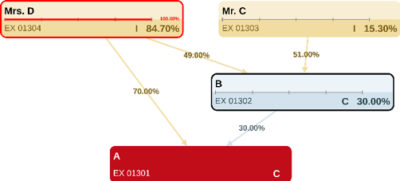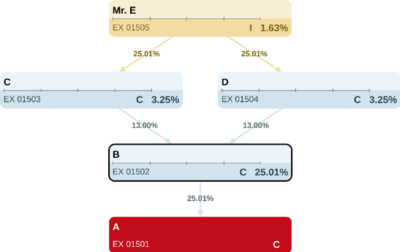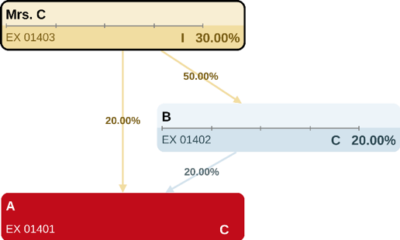Beneficial owners
Identifying beneficial owners has become more and more important as the fight against money laundering and terrorist financing has gained a lot of focus internationally.FATF (Financial Action Task Force), OECD and the European Union all give guidance concerning which entities should be obligated to identify beneficial owners of their customers, and to a certain extent, criteria for identifying the beneficial owners. Most countries in the world today have some kind of national legislation related to beneficial ownership.
Unfortunately, the definition of beneficial owner varies from country to country. However, most definitions are directed towards who ultimately owns or controls a given company.
There are several approaches to calculating beneficial owners. All traditional approaches have deficiencies when it comes to identifying the real powerful ultimate shareholders in complex ownership structures. T-rank´s unique power index reveals who the powerful owners are, and our recommended method for identifying beneficial owners is the voting power approach combined with the integrated ownership approach. However, since people have to obey different local and national rules and legislation, we support all common ways of calculating beneficial owners based on ownership, and the user may combine the different approaches in any way he wants.
The voting power approach
The recommended threshold for voting power when determining beneficial ownership is 50%. Based on this, Mrs C, Mrs. D and Mr. E are all beneficial owners in A (they all have the same level of power – if they cooperate with one other person, regardless, who, they will have majority).

The control approach
Mr. C is a beneficial owner in A because he controls B which has more than 25% of the voting rights in A. Mrs D controls 70% of the voting rights in A directly and is also a beneficial owner.

The recursive approach
Mr. E owns more than 25% in both C and D and is beneficial owner in these companies. Since C and D together own more than 25% in B, Mr. E is also a beneficial owner in B. Finally, since B owns more than 25% of A, Mr. E is also a beneficial owner in A.

The integrated ownership approach
Mrs.C is a Beneficial Owner in company A because her integrated ownership (synonym for indirect ownership) in A is 30%, above the commonly used threshold of 25%.

T-rank has a module for Beneficial Owners with the following features:
- The Beneficial Owners are calculated according to a definition and thresholds set by the user/client
- The Beneficial Owners are calculated, visualized and explained (it is explicitly stated why a beneficial owner is a beneficial owner)
- If the necessary Beneficial Owners are not found
- The completeness of the shareholder data is indicated (the user can deduce whether there are no Beneficial Owners or there is missing data)
- The company/companies on the top of the shareholder structure are shown, so the user knows where to continue the investigation
For a white paper on Beneficial Owners, please read here.